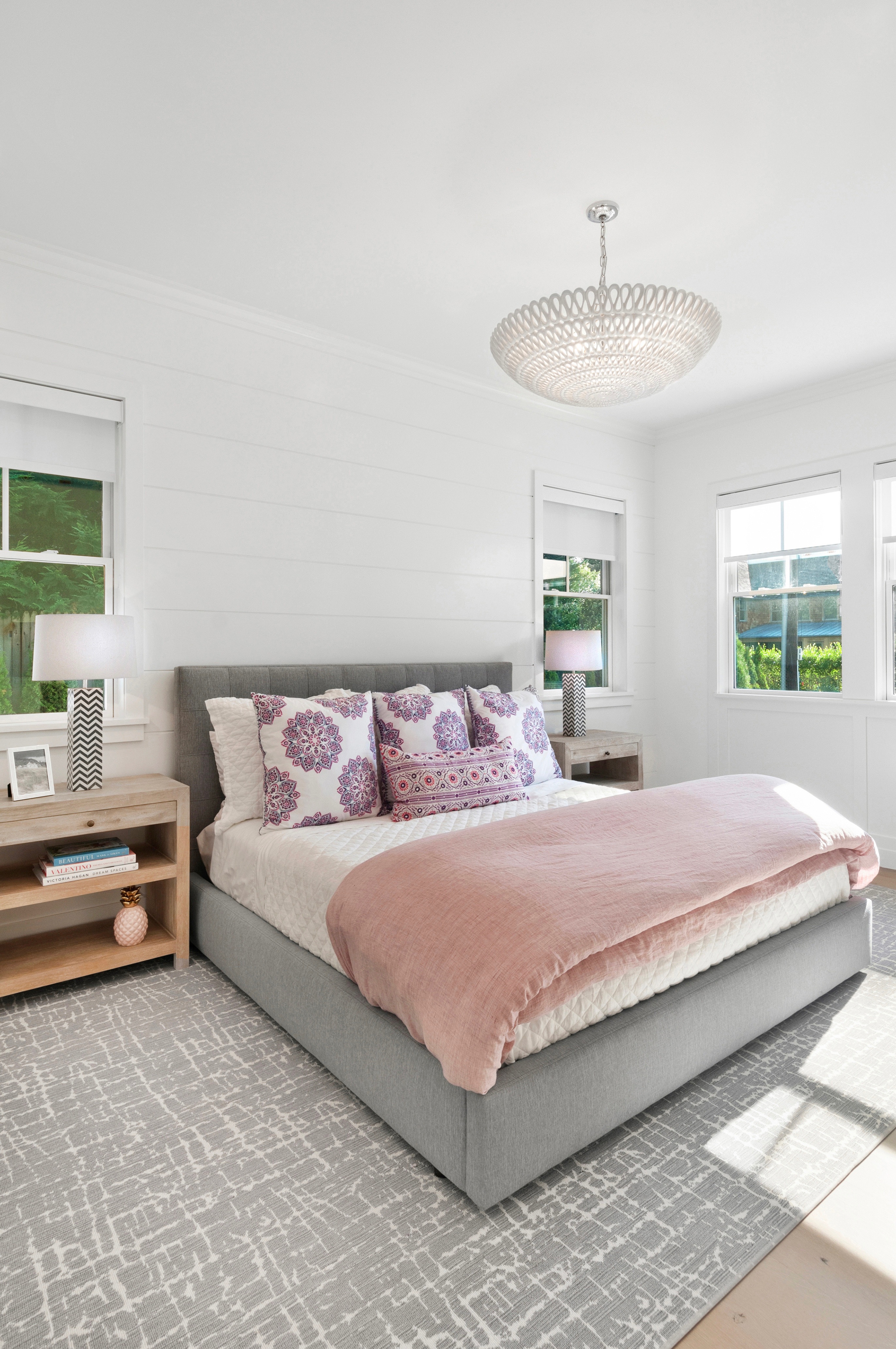We have all walked into spaces we love and felt a distinct sense of serenity and harmony. A calming space can allow all of our sensory worlds to come alive but more often than not, we don’t stop and take stock of the reasons why – we just know it feels so good. As you think about your favorite spaces, consider the fact that any space that produces a soothing, grounding effect (or, for that matter, has an uplifting, cheerful energy) has likely been designed with that in mind.
The design elements of a space can significantly affect the mood of anyone who enters it. Curating an environment that supports the way we want to feel – calm and collected – isn’t just for those who have hefty home renovation budgets. Every intentional design decision, however small, can make a meaningful difference.
Here are a few simple ideas to take into account as you work to create your own serene space:
Maximize your Natural Light
Scientists have determined that natural light can enhance your mood and that stress levels can fall as circadian rhythms align. Consider removing heavy drapery, shades, or wood shutters that limit natural light and darken a space. Adding minimalistic window treatments like roller shades in a neutral color will address both form and function issues. Relocate pieces of furniture or plants that might be keeping natural light from peeking in.
Use Calming, Neutral Colors
It doesn’t matter how much natural light streams in if the colors in the paint, furniture, and rugs are dark. Choose lighter, more neutral colors that resemble those you might find along the ocean’s horizon. Designers love playing with color and pattern, but while bold choices can add whimsy, they don’t always yield a sense of calm. Opt for clean and crisp colors for the walls and larger pieces of furniture. Among the soothing colors I enjoy using in my clients’ spaces are Accessible Beige from Sherwin Williams and Portland Gray by Benjamin Moore. Keep in mind that what is relaxing for one can be stimulating for another and ultimately you will need to rely on your personal preferences. If you love color, choose just a few colors to work as accents. Incorporate those few colors into your space and art work using different variations of the same tone. Using too many different colors can have the opposite effect of the calming mood you are trying to achieve.
Add Softness to Layouts, Shapes and Textures
When considering the flow of your space, think about layouts that are inclusive without closing off a room. If your seating layout includes a U-shape with sharp corners and hard edges, adding softer shapes such as a round coffee table or side tables will help soften the look and feel of the space.
Even the shapes of the seating pieces you choose can help create a more relaxed environment. Accent pieces such as a curved back loveseat, barrel back side chairs, and round ottomans will further cozy up a space. Similarly, adding circular throw cushions and minimizing hard edged accessories will help toward the effort. Employing a mixture of plush textures and fabrics that are more tactile, like soft wovens, velvets and mohair blends, can also help produce a sense of calm. Leather and metals can feel sterile and cold to some, so use them sparingly.
Less Really is More
Too many things in your space can contribute to feelings of unrest. Several small pieces of furniture may fill a space but can also evoke chaos. Instead, choose fewer, larger pieces that fill your space appropriately. For example, an L-shaped sofa makes the most of corners and floor space while keeping the amount of furniture to a minimum.
Aim to clear your clutter by storing what doesn’t need to be seen and disposing of what doesn’t add value. This minimalist approach can go a long way toward creating more tranquil quarters. If the idea of decluttering feels intimidating, try reversing the process. Begin by completely clearing out your space, then start reintroducing your accessories with intent. Do certain objects spark fun memories of your last vacation? Do the framed photos remind you of happy times? Are you using coffee table books as space fillers or do you have a real connection to them? Choosing pieces that have personal meaning will get you closer to your goal of achieving a peaceful environment.




